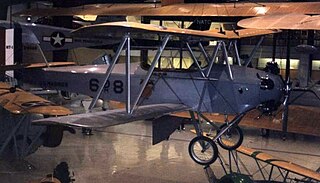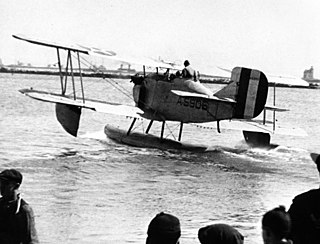
The Pitcairn Mailwing family was a series of American mail carrier and three-seat sport utility biplane aircraft produced from 1927 to 1931.

The Keystone K-47 Pathfinder was an airliner developed in the United States in the late 1920s, built only in prototype form.

The New Standard D-29 was a trainer aircraft produced in the US from 1929 to 1930. It was a conventional biplane design with a fuselage constructed from duralumin members riveted and bolted together, and the wings were made with spruce spars and bass-wood and plywood built-up ribs. Deliberately built to be rugged and simple the D-29 was moderately successful, but had to compete with the Swallow TP.
The Boeing Model 203 was a three-seat biplane trainer build by Boeing in the late 1920s and used in the company training school.

The American Eagle A-129 was a 1920s biplane built in the U.S.A.

The Monocoupe 110 Special was a United States sporting and racing aircraft of the 1930s and 1940s.

The Driggs Dart was an American-built light sporting aircraft of the late 1920s.

The Waco A series is a range of light American-built twin side-by-side seater sporting biplanes of the early 1930s.

The Stearman LT-1 was a late 1920s American biplane, carrying four passengers plus mail.

The Waco E series is a small family of American-built cabin biplanes built between 1939 and 1942, which differed primarily by engine installation.
The Solar MS-1 was an American prototype all-metal sesquiplane airliner built in 1930.
The Bird Wing or later, Bird Wing Imperial was a light sport biplane of the 1920s and 1930s.

The Barnhart Twin 15 "Wampus-Kat" is a twin engine biplane that was built in 1920.
The Travel Air 1000 was an American single-engined biplane, the first product of the newly formed Travel Air Manufacturing Company of Wichita, Kansas. It led to a line of Travel Air biplanes produced until 1930 when the company was bought by Curtiss-Wright.
The Williams-Cangie WC-1 Sundancer is an American homebuilt biplane racing aircraft that was designed by Art Williams and Carl Cangie and built by Ralph Thenhaus in 1974. Plans were at one time available from Williams' company, the Williams Aircraft Design Co of Northridge, California. Only one was built.
The Kelly-D is an American homebuilt aircraft that was designed by Dudley R. Kelly of Versailles, Kentucky, in 1981. When it was available, the aircraft was supplied in the form of plans for amateur construction. Aircraft Spruce & Specialty Co still provides some spruce wing parts for the design.
The St Croix Pietenpol Aerial is an American homebuilt aircraft that was designed by Chad and Charles Willie and produced by St Croix Aircraft of Corning, Iowa, first flown in 1977. When it was available the aircraft was supplied in the form of plans for amateur construction, with partial kits available.
The Starfire Firebolt, sometimes called the Starfire Firebolt Convertible, due to its removable canopy, is an American homebuilt aerobatic biplane that was designed by G. H. "Mac" McKenzie and produced by Starfire Aviation of Tempe, Arizona. When it was available the aircraft was supplied in the form of plans for amateur construction, with some pre-fabricated parts available.

G Elias & Brother was and American manufacturer of cabinets and aircraft based in Buffalo, New York in the 1920s. A.G. Elias sat on the Manufacturers Aircraft Association's board of directors along with President Frank H. Russell, VP Glenn L. Martin, Charles L. Laurence, Chance M. Vought, S.S. Bradley, George P. Tidmarsh, and Donald Douglas. E.J Elias promoted the construction of a Buffalo municipal airport to aid the local fledgling airplane industry of five aviation companies constructing airplanes and airplane parts. From 1920 to 1925, Elias company's chief engineer, David Earle Dunlap (1896-1957), designed the Elias EM-2 Expeditionary planes. He designed the NBS-3 bomber fuselage and the Elias M-1 Mail plane. Dunlap's Elias TA-1 design was the first United States Army Air Corps Trainer to have a radial engine. After tests a McCook Field, the Army Air Corps selected other manufacturers over the Elias bomber and trainer. The company designed the Elias EM-1 to meet requirements for a multirole amphibian marine expeditionary aircraft. Elias delivered six production Elias EM-2 aircraft with Liberty engines to the United States Navy in 1922.

The Thunderbird W-14 was a small, three seat American passenger transport, first flown in 1926, entering production, significantly improved, in 1927 with several different engine options. About 40-50 were built before the financial collapse of the company in 1929.












